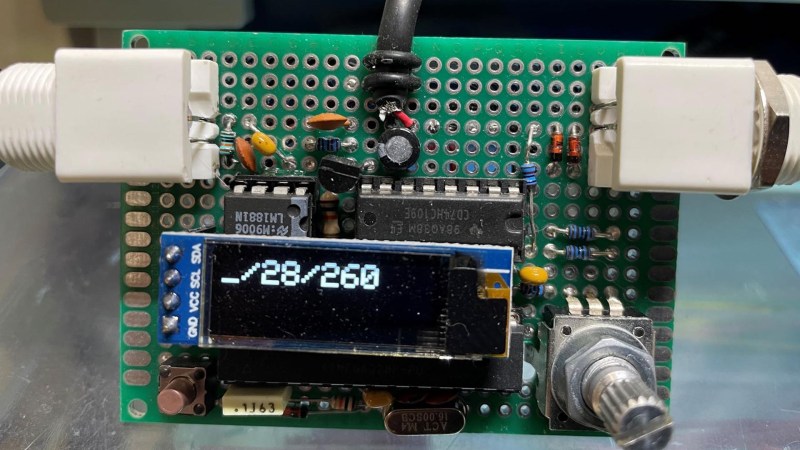Working on retro computers is rarely straightforward, as [ukmaker] recently found out while designing a new display interface. Their oscilloscope was having trouble triggering on the video signal produced by older video circuitry, so they created the Video Trigger for Retrocomputers.
The Texas Instruments TMS9918 video display controller was used across a range of 1980s game consoles and home computers, from the well-known ColecoVision to Texas Instruments’ own TI-99/4. Substantial retro computing heritage notwithstanding, the video output from this chip was (for reasons unknown) not quite compatible with the Hantek DSO1502P oscilloscope. And without a better understanding of the video signal, it was difficult to use the chip with newer TFT displays, being designed for CRT televisions with more forgiving NTSC tolerances.
Maybe a different scope would have solved the problem, but [ukmaker] had a feeling that the ‘scope needed an external trigger signal. The Video Trigger project uses a LM1881 sync separator to tease out the horizontal and vertical sync signals from the vintage video chip, with the output piped into an ATmega 328P. Along with a smattering of discrete components, the ATmega aids the user in selecting which line to frame a trigger on, and the slope of the horizontal sync signal to align to. A tiny OLED display makes configuration easy.
If this has piqued your interest, [ukmaker] also has a great write-up over on GitHub with all the gory details. Maybe it will help you in your next vintage computing caper. Having the right tool can make all the difference, like this homebrew logic meter for hobby electronics troubleshooting. Or if you want to know more about the mystical properties of analog NTSC video, we’ve covered that, too.

















Reasons uknown… .. typically the same reasons the digital/LCT/TFT monitors have problems locking on the signal from retro machines. It deviates wildly from the norms, is not (properly) interlaced, has levels far off the specs, has timing dedicated byt the available rather than specified frequencies and maybe half a dozen more “unknown” reasons… ;-)
Yep – TVs were /very/ tolerant back then. Mid ’00s, I recall having to specifically search out some very cheap 14″ CRTs for 50/60Hz testing in the UK as they were the ones that were built sufficiently crappily to be flexible in the input they took (others lost the colour signal at 60Hz)
ukmaker here: Agreed, though I have a video to VGA converter which can lock properly, as can my shiny new Rigol scope. This is actually easier to use than the Rigol though, so it’s still on my workbench :-)
Of course now my VDPtoTFT project can trigger on the VDP signal, so I could rework this one to use just an STM32 and allow triggering on a chosen line or even pixel….. Oops. Another rabbit-hole.
An old CRO would of worked.
I’m lucky enough to have found a Tektronix TDS784D with the TV trigger option, but this solution looks much easier to source, and much cheaper too.
Stick it in a case with video input, video output and trigger output jacks with an impedance matched trace connecting input and output for fun and it would be pretty professional looking.
I wonder if you could power it from the Tekprobe interface/whatever brand interface your scope has?
Now you’ve done it. I need to re-layout the PCB to allow for video out. I like it :-)
Another option I recently ran across was this Arduino based Video Experimenter Shield. It uses the same LM1881. https://www.tindie.com/products/nootropicdesign/video-experimenter-shield-kit/
For a commercial product (if you can still find one) I got hold of a Ultech TV Trigger Mate. I used it to check a VCR that I was having trouble getting captions output on. Turned out this Medical VCR somehow loses a line during the vertical blanking interval and captions end up on Line 20.
Ah, the glorious rabbit hole of stuff-to-make-to-make-stuff! So often the side project turns out to be more interesting & challenging than the original primary goal!